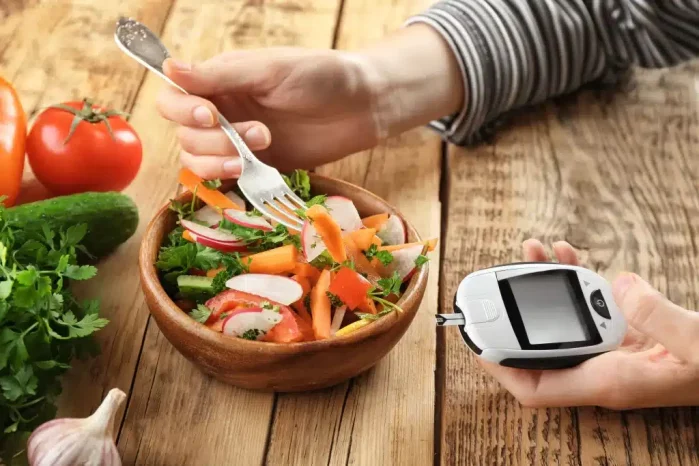Excess belly fat, also known as visceral fat, is not just a cosmetic concern but also a significant risk factor for various health conditions, including type 2 diabetes, heart disease, and metabolic syndrome. Unlike subcutaneous fat, which lies just beneath the skin, visceral fat accumulates around internal organs, increasing the risk of inflammation and insulin resistance. Therefore, targeting belly fat can be crucial for overall health and well-being.
Scientific Explanation
Certain foods have been shown to influence fat burning, particularly in the abdominal area, through various mechanisms such as boosting metabolism, reducing appetite, and promoting fat oxidation. Understanding the science behind these foods can help individuals make informed dietary choices to support their belly fat reduction goals.
List of Foods
Avocados: Rich in healthy fats, avocados are packed with monounsaturated fats, which have been linked to reduced belly fat and improved insulin sensitivity. Additionally, avocados are a good source of fiber, which can help promote satiety and prevent overeating.
Salmon: Fatty fish like salmon are high in omega-3 fatty acids, which have been shown to reduce visceral fat accumulation and inflammation. Omega-3s may also improve insulin sensitivity and promote fat burning, making salmon an excellent choice for those looking to trim their waistline.
Leafy Greens: Vegetables like spinach, kale, and Swiss chard are low in calories but high in fiber and nutrients. Their high fiber content promotes feelings of fullness and helps regulate blood sugar levels, making them an excellent choice for reducing belly fat.
Greek Yogurt: Greek yogurt is a rich source of protein, which can help increase metabolism and promote fat loss, especially in the abdominal area. Additionally, the probiotics found in Greek yogurt may support gut health, which is essential for weight management.
Berries: Berries such as strawberries, blueberries, and raspberries are packed with antioxidants and fiber, which can help reduce inflammation and promote weight loss, including belly fat reduction. Their low glycemic index also makes them an excellent choice for stabilizing blood sugar levels.
Nutritional Information
Avocado (1 medium): Calories: 234, Fat: 21g, Carbohydrates: 12g, Fiber: 10g, Protein: 3g
Salmon (3 ounces): Calories: 175, Fat: 10g, Carbohydrates: 0g, Protein: 19g
Leafy Greens (1 cup, cooked): Calories: 33, Fat: 0.5g, Carbohydrates: 6g, Fiber: 4g, Protein: 3g
Greek Yogurt (1 cup, plain, non-fat): Calories: 100, Fat: 0g, Carbohydrates: 6g, Protein: 17g
Berries (1 cup): Calories: 50-80, depending on the type, Fat: 0.5-1g, Carbohydrates: 12-15g, Fiber: 3-6g, Protein: 1-2g
Recipes and Serving Ideas
Avocado and Spinach Salad: Toss together fresh spinach leaves, diced avocado, cherry tomatoes, cucumber slices, and grilled chicken breast.Drizzle with olive oil and balsamic vinegar for a refreshing and satisfying meal.
Grilled Salmon with Lemon and Dill: Marinate salmon fillets in a mixture of lemon juice, olive oil, minced garlic, and fresh dill. Grill until cooked through and serve with a side of steamed broccoli or sautéed spinach.
Greek Yogurt Parfait: Layer Greek yogurt with mixed berries and a sprinkle of granola for a nutritious and satisfying breakfast or snack option.
Berry Smoothie: Blend together Greek yogurt, mixed berries, spinach, almond milk, and a scoop of protein powder for a delicious and filling smoothie that’s perfect for any time of day.
Lifestyle Considerations
While incorporating these belly-fat-burning foods into your diet is important, it’s also essential to adopt a holistic approach to health, including regular exercise, stress management, and adequate sleep. Engaging in physical activity, managing stress levels through activities like yoga or meditation, and prioritizing quality sleep can all support your efforts to reduce belly fat and improve overall well-being.
Precautions for Diabetics
Individuals with diabetes should be mindful of their carbohydrate intake, even when consuming healthy foods like fruits and yogurt. It’s essential to monitor blood sugar levels regularly and consult with a healthcare provider or registered dietitian for personalized dietary recommendations that take into account blood sugar management goals and medication use.
Start incorporating these belly-fat-burning foods into your diet today to support your weight loss and health goals. Remember to consult with a healthcare provider or registered dietitian for personalized advice and guidance tailored to your individual needs and preferences.
Conclusion
By focusing on nutrient-dense foods that promote fat burning and supporting lifestyle factors like exercise and stress management, individuals can effectively target belly fat and improve overall metabolic health. With the right approach and support, achieving a trimmer waistline and better health outcomes is within reach for everyone.
Related Topics:
Do Not Eat These Food, If You Have High Blood Sugar























